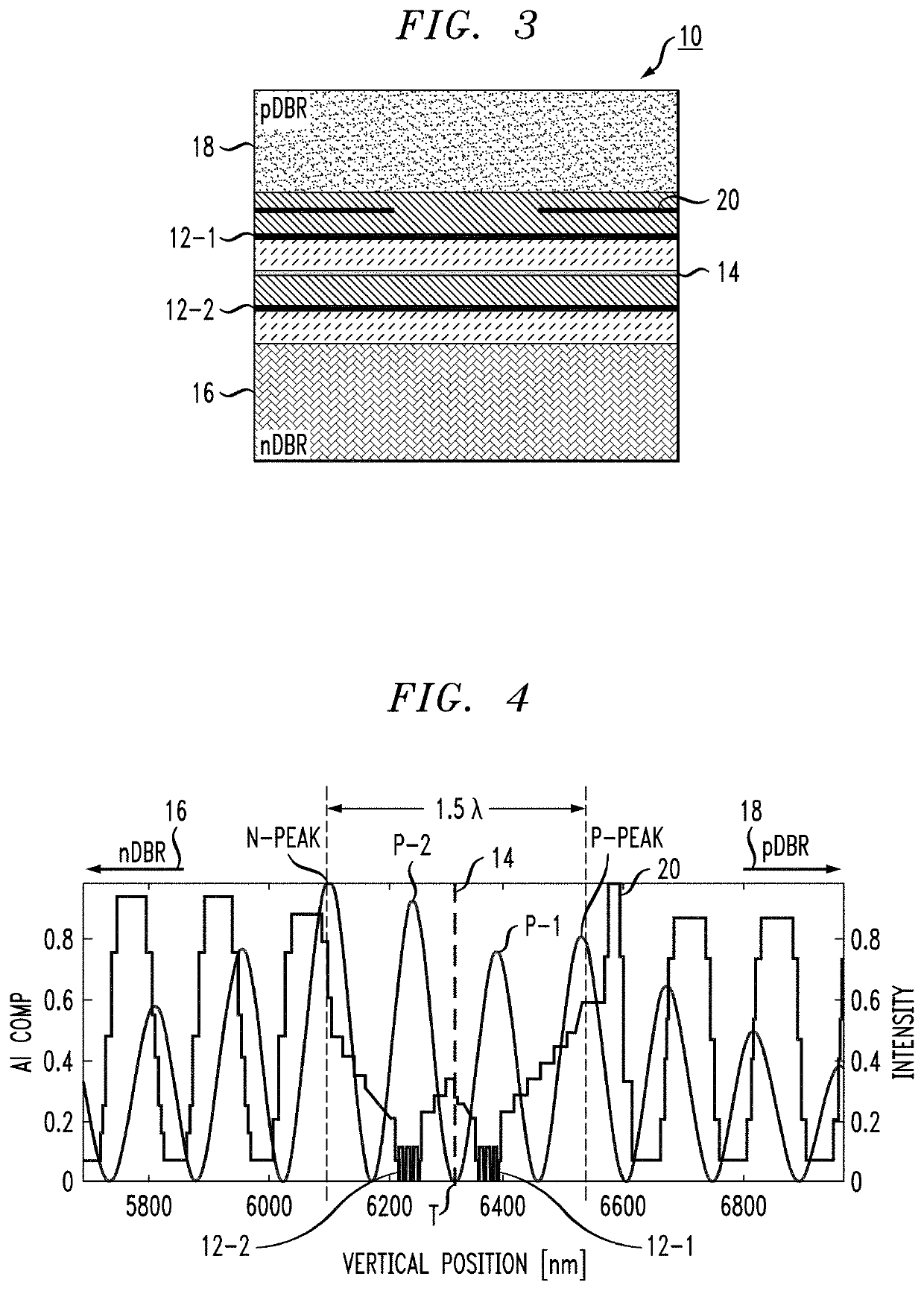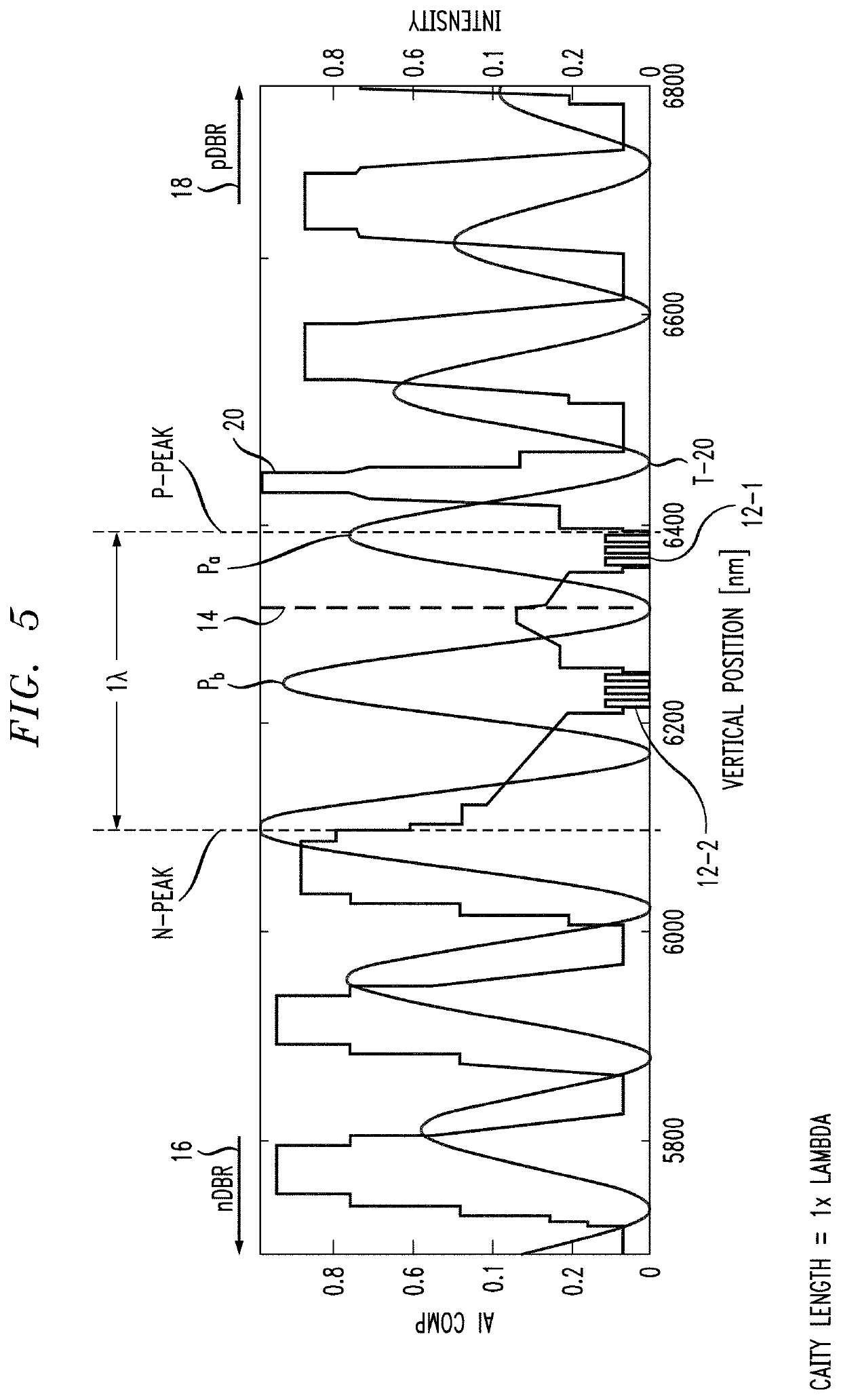Multi-Junction VCSEL with Compact Active Region Stack
a technology of active region stack and vcsel, which is applied in the direction of semiconductor lasers, laser details, electrical apparatus, etc., can solve the problems of inability to control and match as much as possible the two oxide apertures, inherent problems with respect to current spreading and modal instability, and inherently limited optical output power that may be delivered by an individual vcsel device, etc., to achieve the effect of minimizing optical loss and increasing optical confinemen
- Summary
- Abstract
- Description
- Claims
- Application Information
AI Technical Summary
Benefits of technology
Problems solved by technology
Method used
Image
Examples
Embodiment Construction
[0027]FIG. 1 is a simplified view of a conventional prior art VCSEL 1, formed to include a pair of “stacked” active regions 2-1 and 2-2. A tunnel junction 3 is positioned between active regions 2-1 and 2-2 as shown, and is used to move holes and electrons between the active regions in a manner that energizes both regions from the bias current applied as an input to the structure (not shown). Tunnel junction 3, as shown in the enlarged portion of FIG. 1, comprises a highly-doped n-type layer 3n formed over a highly-doped p-type layer 3p. The doping levels need to on the order of 1×1019 cm−3 or greater in order to allow tunneling of carriers through the tunnel junction. A conventional oxide aperture layer 4 is shown a formed within a p-type distributed Bragg reflector (pDBR) 5, where the created optical output is typically emitted from pDBR 5. An n-type DBR, shown as nDBR 6 forms the bottom reflective portion of the laser structure.
[0028]Under reverse bias, tunnel junction 3 is used t...
PUM
| Property | Measurement | Unit |
|---|---|---|
| refractive index | aaaaa | aaaaa |
| conductivity type | aaaaa | aaaaa |
| conductivity | aaaaa | aaaaa |
Abstract
Description
Claims
Application Information
 Login to View More
Login to View More - R&D
- Intellectual Property
- Life Sciences
- Materials
- Tech Scout
- Unparalleled Data Quality
- Higher Quality Content
- 60% Fewer Hallucinations
Browse by: Latest US Patents, China's latest patents, Technical Efficacy Thesaurus, Application Domain, Technology Topic, Popular Technical Reports.
© 2025 PatSnap. All rights reserved.Legal|Privacy policy|Modern Slavery Act Transparency Statement|Sitemap|About US| Contact US: help@patsnap.com



